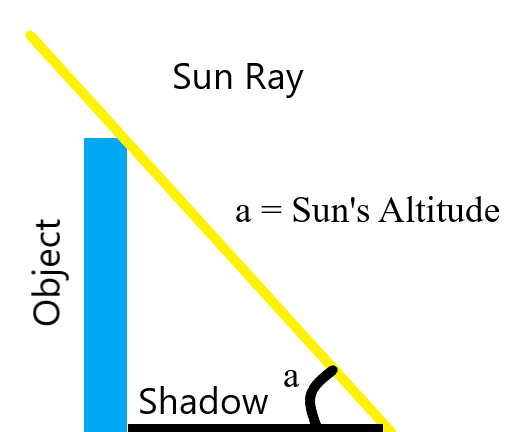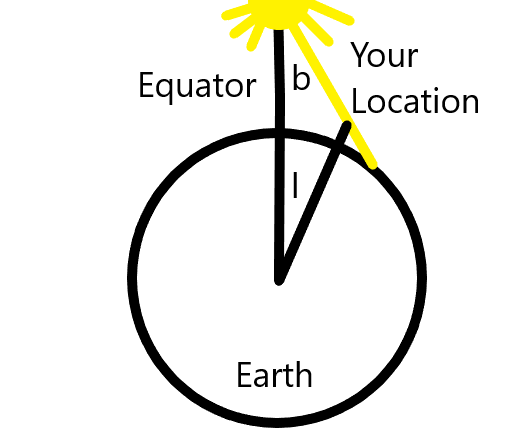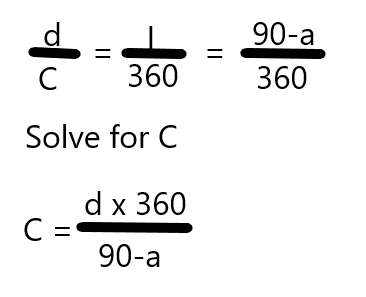
The vertical object; the shadow it casts, and the Sun's ray make a right-angle triangle. The angle between the Sun's ray and the shadow is the Sun's altitude (a). We can use the trigonometric identity tan(angle)=opposite/adjacent to calculate the Sun's altitude using the length of the shadow and the height of object. This gives a = arctan(Height of Object/Length of the Shadow).

The above diagram shows the relationship between your observation of the altitude of the Sun near the Equinox; your latitude (l) and the distance from you to the equator. The small triangle at your location is the triangle from the first diagram. The larger triangle that includes the angle b is a similar triangle to the small one, which means it has the same angles. The sum of all the angles in a triangle is 180 degrees, a (Sun's altitude) + b + 90 =180. This gives us b = 90-a. The angle l between the equator and your location is your latitude, it is also equal to b. This means that near the equinox your latitude is equal to 90-a (the Sun's altitude) [l = 90-a].
The distance between your location and the equator (d) is a piece of the whole circle. The distance around the whole circle is the circumference (C). The ratio the distance and the circumference (d/C) is the same as the ratio of the angle l and the angle all the way around the circle (360 degrees). We can use these ratios and the fact that l=90-a to find an equation for the circumference C=(360xd)/(90-a).
